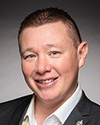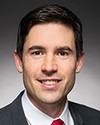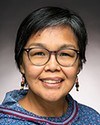Thank you.
NACCA is in a unique place, I believe, because of what I mentioned, which is our access to entrepreneurs across Canada from coast to coast to coast.
The idea of procurement came up. It's developed over time so that now we have a pretty solid position on this. We have networked with our IFIs, our indigenous financial institutions, across the country.
This 5% target of government contracts going to indigenous suppliers makes sense. I wonder about the challenges of making that happen and some of the things we'd have to do on our side and some of the things you'd have to do on your side. How could we better get to that place where we want to be?
Certainly how we go about identifying those who are indigenous entrepreneurs and what that means and how we come up with certification are questions we have all asked. What's interesting is that when we started this process, we even had to go inside ourselves and ask what qualified as an indigenous business, and we had our own internal back-and-forth about what that possibly could mean. It's been a learning process.
Ultimately, at the end of the day, our entrepreneurs just want to do business. If given the opportunity, they would do it well. I believe that.
How do we go about creating that? What I have always found is that we have this side A and side B. There's this middle, where we have to create that space so that they link up better. If we can do that, however that might be, I think that's how we'll flourish.
I can't help but also think about the procurements that are available for first nations vis-à-vis industry directly. That's where we seem to have had the most progress. I've been to those offices right in first nations communities, procurement offices that are interfacing with industry directly, and lots of activities are coming from it. I think we could learn from them about how they do it and how we can imitate some of those things.
Quite frankly, a lot of it's about relationships. We're very good at relationships. We know that once we start that, we'll do it. Industry knocks on the door and says, “I need this piece of equipment. I need this skilled labour right away. Do you have it?” “Yes, we have it. What do you need?”
I think we need to look at that and start seeing how we might be able to imitate that for government procurement.





